Find fellowships, conferences, grants and awards deadlines, workshops and networking opportunities, crowd-sourced leads to job banks, reporting toolkits, hundreds of MOOCs and more. GO >>
Here are SEJ members' non-fiction and fiction books published in 2007 or earlier.
Find links to members' books published in other years here.
Non-Fiction
"Asphalt Nation: How the Automobile Took Over America and How We Can Take It Back"
"Asphalt Nation" is a major work of urban studies that examines how the automobile has ravaged America's cities and landscape, and how we can fight back. The automobile was once seen as a boon to American life, eradicating the pollution caused by horses and granting citizens new levels of freedom and mobility. But it was not long before the servant became the master — public spaces were designed to accommodate the automobile at the expense of the pedestrian, mass transportation was neglected, and the poor, unable to afford cars, saw their access to jobs and amenities worsen. In "Asphalt Nation," Jane Holtz Kay effectively calls for a revolution to reverse our automobile-dependency. Citing successful efforts in places from Portland, Maine, to Portland, Oregon, Kay shows us that radical change is not impossible by any means. She demonstrates that there are economic, political, architectural, and personal solutions that can steer us out of the mess. Paperback. University of California Press, 1998. ISBN 0-520-216120-2. More information.
"The Backbone of the World: A Portrait of the Vanishing West Along the Continental Divide"
Ten profiles of guides, sheep herders, cattlemen, loggers, miners and others; their varying perspectives on western wilderness and wildlife and their struggles to eke out a living from a landscape as endangered as they are. By Frank Clifford, SEJ member and editor for environmental news at the Los Angeles Times. Crown, 2003. ISBN-10 0767907027. ISBN-13 978-0767907026. More information.
"Blue Frontier — Saving America's Living Seas"
A fascinating account of America's oceans and ocean politics, "Blue Frontier" takes readers on an adventure-filled tour of America's last great wilderness range:its imperiled living seas. From the legacy of navy-funded ocean research and development since World War Two to the latest controversies surrounding beach closures, collapsing fish stocks, killer algae, hurricanes, and oil spills, Blue Frontier explores the impact of history, commerce, and policy on marine life — and by extension all life on earth. By David Helvarg. W. H. Freeman, 2001. ISBN 9780716737155. More information.
"Ginseng, the Divine Root: The Curious History of the Plant that Captivated the World"
The story behind ginseng is as remarkable as the root itself. Prized for its legendary curative powers, ginseng launched the rise to power of China's last great dynasty, triggered trade wars, and sparked a boom in Minnesota comparable to the California Gold Rush. It has made and broken the fortunes of many and has inspired a subculture in rural America unrivaled by any herb in the plant kingdom. Today, ginseng is at the very center of alternative medicine, and is being studied by medical researchers for the treatment of diabetes and Parkinson's disease, and is featured in the booming business of energy drinks. This book tracks the path of this fascinating plant from the forests east of the Mississippi to the bustling streets of Hong Kong and the remote corners of China. Author David A. Taylor becomes immersed in a world full of wheelers, dealers, diggers, and stealers, all with a common goal: to hunt down the elusive "Root of Life." Weaving together his intriguing adventures with ginseng's rich history, Taylor uncovers a story of international crime, ancient tradition, botany, herbal medicine, and the vagaries of human nature. Algonquin Books, 2006. ISBN: 1565124014. More information.
"Global Climate Change and U.S. Law"
"Global Climate Change and U.S. Law" provides comprehensive coverage of the country's law as it relates to global climate change. After a summary of the factual and scientific background, Part I outlines the international and national legal framework of climate change regulation and associated litigation. Part II describes emerging regional, state and local actions, and includes a 50-state survey. Part III covers issues of concern to corporations, including disclosure, fiduciary duties, insurance, and subsidies. Part IV examines the legal aspects of efforts to reduce greenhouse gases, such as voluntary efforts, emissions trading, and carbon sequestration. The book, edited by Michael Gerrard, includes key resource aids, including a glossary of climate related terms; a list of acronyms; extensive endnotes; and a comprehensive index. American Bar Association, 2007. ISBN: 1590318161. More information.
"Global Survival: The Challenge and Its Implications for Thinking and Acting"
"Global Survival" proposes a new academic discipline to be called "Survival Research." It was originally proposed by the eminent political scientist John H. Herz in 1988. Herz suggested: "Survival research must rise above the specific concerns, interests, and even expertise, of any particular discipline, such as political science. It must be interdisciplinary, requiring the cooperation of any and all the social sciences with other scientific disciplines, such as agronomists, climatologists, physicists, medical sciences, and so forth. ... It must mobilize experts in the various fields so as to make them recognize the superdisciplinary concerns of global survival to which priority must be given over and above the more parochial concerns of this or that national, economic, religious or similar grouping.“ Sixteen noted scholars from a wide variety of disciplines contribute chapters addressed to this topic. Ervin Laszlo and SEJ member Peter Seidel, editors. SelectBooks, Inc., 2006. ISBN I-59079-104-5. More information.
"Grave Matters: A Journey Through the Modern Funeral Industry to a Natural Way of Burial"
"Grave Matters" follows a dozen families that found in "green" burial a more natural, more economic and ultimately more meaningful alternative to the tired and toxic send-off on offer at the local funeral parlor. Environmental journalist Mark Harris examines this new green burial underground, leading readers into natural cemeteries and domestic graveyards, taking them aboard boats from which ashes and memorial "reef balls" are cast into the sea. He reports on a family that conducts a home funeral and delivers a loved one to the crematory, another that hires a carpenter to build a pine coffin. By way of contrast, "Grave Matters" details the embalming process and the environmental aftermath of the standard funeral. How-to appendices included. Scribner, 2007. ISBN: 978-0-7432-7768-6. More information.
"Great Waters: An Atlantic Passage"
"Great Waters" explores how earth's life-giving oceans nourish and sustain us, and how humans are altering the sea's finely-tuned balances. From the review in Science: "I will recommend it to anyone who proposes to be an informed citizen of planet Earth." From The (London) Times: "If you read only one book about the ocean, this should be it." By Deborah Cramer. W.W. Norton, 2002. ISBN 039332334X. More information.
"The Greenhouse Trap: What We're Doing to the Atmosphere and How We Can Slow Global Warming"
(A World Resources Institute Guide to the Environment)
Written for general audiences, "The Greenhouse Trap" traces the history of the greenhouse effect and shows how the current crisis has come about. Possible future consequences, based on the most credible scientific research available, are vividly described and objectively assessed. Government policies for slowing global warming are outlined along with suggestions for individuals to follow in their homes and communities. By Francesca Lyman with James J. MacKenzie, et al. Beacon Press, 1990. ISBN 0-8070-8503-0. More information.
"How to Raise Chickens"
Chickens are hot! This book by Christine Heinrichs covers the basics of chicken care to get beginners started, plus enough detail on breeding systems and other husbandry refinements to be of use to the experienced chicken keeper. It includes chicken history and literature, as well as descriptions of historic breeds. It makes the case for traditional breeds as the best choice for backyard chicken keeping. A rich Resources section makes it a valuable reference. Voyageur Press, 2007. ISBN 0760328285. More information.
"Inside the Dzanga-Sangha Rain Forest: Exploring the Heart of Central Africa"
Experiences while journeying through Central Africa's rain forest "from the working journals of the scientists, artists, and filmmakers on expedition for the American Museum of Natural History" are documented in this 127-page book. Twelve chapters cover a wide variety of information, including short biographies of the six participants, descriptions of the types of animal life indigenous to this habitat, and a discussion about setting up the exhibit for the museum. Not as fragmented in design as the "Eyewitness" series, information is segmented into journal writings, photographs with captions, and highlighted portions in the main text for added facts. Reading from the personal perspective is much more enjoyable than the encyclopedic style of other books of this genre. The book gives a feel for the dedication and time that scientists require to carry out fieldwork and the importance of various team member skills. The photographs, too numerous to count, are rich in detail and color. Some span an entire spread, while smaller ones are sprinkled throughout the pages. Compiled by Francesca Lyman. Reviewer: Tina Hudak. Workman Publishing Company, 1998. Ages 8 to 10. ISBN 076110870X. More information.
"A Land on Fire: The Environmental Consequences of the Southeast Asian Boom"
An investigative journalist discovers that Southeast Asia's fight to protect its environment is inextricably intertwined with the push of democracy and the pull of globalization. By James David Fahn. Westview Press, 2004. ISBN 0813342678. More information.
"The Malling of America" (CDs)
Everybody talks about the problems of exponential growth in the west — pollution, congestion, traffic — but talk about solutions and many Westerners give you a blank stare — or argue that you're messing with their private property rights. In the face of those blank stares, the two-part documentary "The Malling of America" tackles this issue.
Available as a 2-CD set or individually. The program is available free of charge to public radio stations for broadcast. Visit the Media Project.
- Part One: In "Across the Great Divide," Oregon-based producer Barbara Bernstein sets out on a road trip through the mountains and canyons of Colorado and Utah, looking for what's left of the West of open space and rugged wildlands. She meets an array of folks trying in their own ways to grapple with the changing west, including Will Toor, the environmentalist mayor of Boulder, Colorado; Del Le Fevre, the last working rancher in Boulder, Utah; Mark and Katie Austin, owners of the Boulder Mountain Lodge, who are trying to bring the New West to this remote corner of Southern Utah, where the road to town was paved less than fifteen years ago; Utah Division of Indian Affairs director Forrest Cuch; and Utah writer and naturalist Terry Tempest Williams.
- Part Two: "Can the Last Place Last?" returns to the West Coast to visit two places that have been living with strict land use planning regulations for twenty five years: Marin County in Northern California, and the state of Oregon. These experiments in planning for growth are contrasted with the hundreds of miles of sprawl that have swallowed farms and natural areas all along the Wasatch Front in Utah and the Front Range of Colorado. In the course of this journey, we come to understand the myriad of issues that are all part of the discussion of growth. What is a landscape's principal value: as an economic resource or as a source of natural habitat, beauty and spiritual connection? And how do we create livable communities that do not become exclusive enclaves for the wealthy?
"Mass Media and Environmental Conflict: America's Green Crusades"
News media coverage of conservation and public health controversy began long before the environmental movements of the 1960s. In "Mass Media and Environmental Conflict," authors Mark Neuzil and Bill Kovarik present a series of case studies describing interactions between the media and social groups in the late 19th and early to mid 20th century. Neuzil and Kovarik explore the role of books, magazines, newspaper articles, and other media and the ways they have created both regional and national communities of environmental understanding. Neuzil and Kovarik fold together early environmental groups, the mass media, the bureaucratic power structure, and the social system of each period, examining battles over public land, wild animals, clean air, and workplace hazards. The authors also describe controversies over America's national parks; species depletion and the evolution of hunting regulations; muckrakers and the great Alaskan land fraud; Hetch Hetchy and the first big dam controversy; the Ethyl gasoline debate; and the Radium Girls controversy. Sage Publications, 1996. ISBN 076190333X. More information.
"Monkey Dancing: A Father, Two Kids and a Journey to the Ends of the Earth"
After his wife of 15 years divorced him and moved out of state with her new girlfriend, followed by the death of his brother from breast cancer, Daniel Glick found himself raising two decidedly spirited children on his own. He opted to forge this new family of three by using adventure as their crucible, embarking on a five-month world tour with his 13-year old son and 9-year-old daughter to see some of the planet's most wondrous and environmentally endangered landscapes. From the python-infested rivers of Borneo to the jungles of Vietnam, from Nepal's Gangeatic Plains to Australia's Great Barrier Reef, Glick weaves accounts of the trio's encounters with the natural world into his intimate reflections on loss, change, and fatherhood, illuminating the connection between our relationship with each other and our relationship with the earth we inhabit. A Colorado book award winner and Amazon.com's "Top 50 Editors' Picks" for 2004. PublicAffairs, 2003; ISBN 1586482378. More information.
"Path of Destruction: The Devastation of New Orleans and the Coming Age of Superstorms"
Katrina was the signal event of the new century, a body blow to the national self-image. Scenes Americans expect to see in far-off, ungovernable countries have now unfolded in the mightiest nation on earth: victims struggling to survive amid depravity and death, an entire city reduced to an empty shell, a diaspora of refugees unseen since the days of the Dust Bowl. Even as rebuilding gets underway, a sense of shock and confusion lingers. Indeed, sensationalism and political finger-pointing have made it nearly impossible to distinguish the truth from the spin. But now, John McQuaid and Mark Schleifstein cut through the confusion to offer a clear explanation for the greatest natural disaster in American history. "Path of Destruction" isn't just a book about the storm, those who survived, and those who didn't; it's also an account into the dreadful inadequacies that existed prior to 2005, an indictment of the Washingtonofficials who failed to act, and a scientific investigation into why these huge storms are coming now. Little, Brown and Company, 2006. ISBN 031601642X. More information.
"Powder Burn: Arson, Money and Mystery on Vail Mountain"
In the pre-dawn hours of October 19, 1998, a commando-style arson destroyed $12 million worth of chair lifts and mountaintop buildings at Vail, Colorado, the largest ski resort in the United States. Within days, an email arrived from a little-known radical environmental group known as the Earth Liberation Front, claiming credit for the arson. But the ELF's claim of credit was never substantiated, and the number of potential suspects grew in direct proportion to the number of enemies that the ski area's owners — Vail Resorts, Inc. — had made after they purchased Vail in 1996. "Powder Burn" examines the strange goings-on at the heart of the "New West" — a place where the traditional mining, grazing, and timbering economy shifted to include modem cowboy millionaires building "starter castles" and Wall Street companies strip-mining the Rockies' famous scenery. In "Powder Burn," Daniel Glick takes readers on a compelling and wild ride through this bizarre town full of bombastic characters to lay bare the growing pains of a breathtakingly beautiful region. Packed with odd characters and paranoia, with purple mountains and despicable actions, this is a book about crime, the environment, a small town, and an unsolved mystery. PublicAffairs, 2003. ISBN 1586481649. More information.
"Radio Tales for the Road" (CDs)
Producer Barbara Bernstein's unique combination of story-telling, radio theater and original music.
1 hour CD. Visit the Media Project. More information.
- Program One: "Getting Lost"
Two contrasting experiences of getting lost in the wilderness. In 1970 a young naive urban hippie gets lost in Big Sur. Nearly thirty years later, as an experienced hiker, she goes for a simple day hike in a Southern Utah canyon and discovers the deadly mischievous potential of Coyote's canyon.- Program Two: "Hidden Waters"
The metaphors of culverted rivers running underground and roaring rapids and waterfalls inundated by the backwaters of dams along the Columbia River are at the heart of two tales about confronting the death of one's parents and the threatened extinction of the Pacific Salmon.
"Return of the Condor: The Race to Save Our Largest Bird from Extinction"
Award-winning science journalist John Moir tells the riveting account of one of the most dramatic attempts to save a species from extinction in the history of modern conservation. Down to only twenty-two individuals in the 1980s, the condor owes its survival and recovery to a remarkable team of scientists who flouted conventional wisdom and pursued the most controversial means to save it. The book, which features a 32-page color-photo insert, takes readers deep into condor country. It also connects the condor's plight to the larger extinction crisis sweeping our planet. "Return of the Condor" was selected by the National Association of Science Writers for an Honorable Mention in their Science-in-Society Journalism Awards that recognized the book as one of five outstanding works of science journalism that were published or broadcast in 2006. Lyons Press, 2006. ISBN 1592289495. More information.
"Rivers That Were" (CDs)
"Rivers That Were" is a two-part documentary by Oregon-based, award-winning producer Barbara Bernstein. These two hours explore the long-term consequences of over a century of redesigning nature to suit commercial and industrial needs. The programs juxtapose the voices and viewpoints of Native Americans, barge operators, water engineers, environmentalists, policy makers and others who live and work in the watersheds of these two mythic Western rivers.
Available as a 2-CD set or individually. The program is available free of charge to public radio stations for broadcast. Visit the Media Project. More information.
- Part One: "Working Water" compares two environmental crises. On the Colorado River Basin, it's the ongoing effort to restore the Salton Sea. On the Columbia, it's the confounding crisis of how to clean up one of the most toxic sites in the world, the Hanford Nuclear Reservation.
- Part Two: "Beaver Taught Salmon How To Jump" recreates the once natural and free-flowing tributaries and mainstem of the Columbia River, the Great River of the West. The river that was is contrasted with today's industrialized landscape of culverted urban creeks, hardened riverbanks and inundated waterfalls.
"Sacred Sea: A Journey to Lake Baikal"
Excerpted from the New York Times, Nov. 26, 2007: "Russians sing patriotic hymns about Lake Baikal, and with good reason. Their 'sacred sea' is the oldest lake on earth, as well as the deepest and the largest by volume... it could swallow Lakes Superior, Michigan, Huron, Erie and Ontario and still be thirsty. Journalist Peter Thomson knew next to nothing about Baikal before reading a seductive article in the National Geographic. Eight years later he quit his job as an environmental news producer for NPR and talked his brother into joining him on a round-the-world trip to a place where neither understood the language or the culture. The result is this superb paean to a unique and bizarre ecosystem. A laboratory of evolution, Lake Baikal is home to hundreds of plants and animals found nowhere else. Mr. Thomson investigates the biochemistry behind the myth that the lake's water purifies itself. (Russian scientists think the secret lies with a miniature shrimp that filters industrial pollutants, of which tons were introduced during Soviet rule.) Careful not to prescribe development scenarios from the comforts of America ("Baikal, Too, Must Work" is the title of the last section, on the economic history of the region), Mr. Thomson clearly favors low-impact tourism as the optimal model for the future. The lake's remoteness has so far preserved it from becoming Tahoe or Banff. "Bad roads are good for Baikal," says a local. Mr. Thomson is a trustworthy companion on these matters, but he has also written a compelling diary of personal discovery. Curiosity alone seems to have guided his footsteps. Wagering whim and risk over common sense was in this case the right move, for him and for us." Oxford University Press, 2007. ISBN 0195387333. More information. Voice clip (27 mins).
"Silent Snow: The Slow Poisoning Of The Arctic"
Traditionally thought of as the last great unspoiled territory on Earth, the Arctic is in reality home to some of the most contaminated people and animals on the planet. Awarded a major grant to conduct an exhaustive study of the deteriorating environment of the Arctic by the Pew Charitable Trusts (the first time Pew has given such a grant to a journalist), Los Angeles Times environmental reporter Marla Cone traveled across the Arctic, from Greenland to the Aleutian Islands, to find out why the Arctic is toxic. Hardcover. Grove Press, 2005. ISBN 080211797X. More information.
"A Spiritual Field Guide: Meditations for the Outdoors"
"A Spiritual Field Guide" is a sophisticated, unsentimental devotional reader designed for nature lovers. Bernard Brady and Mark Neuzil (former SEJ board member) offer up reflections on the natural world, humanity's place in nature, and the role and tradition of "wilderness" in seeking and communicating with God. Each chapter includes a series of readings, meditations and quotes drawn from history's most observant and articulate nature lovers. Publisher's Weekly called it "a solid and fulfilling collection of writings about nature with a spiritual bent." Library Journal called it "a novel compendium." John E. Phelan, president of North Park Theological Seminary in Chicago, wrote: "It will be in my backpack during the days of hiking this summer." Paperback. Brazos Press, 2005. ISBN 1587431181. 192 pages. More information.
"State of the Wild 2006: A Global Portrait of Wildlife, Wildlands, and Oceans"
How do we gauge the state of earth's wildlife, wildlands, and oceans? "State of the Wild" is a new annual series that brings together some of the world's most renowned conservationists and writers — George Schaller, Alan Rabinowitz, Sylvia Earle, Rick Bass, Bill McKibben, Tom Lovejoy, and many others — to assess wildlife and wilderness, and to provide insights into how humans can become better stewards of the wild. This 2006 edition, edited by SEJ member Sharon Guynup, explores the impacts of hunting and the wildlife trade through a range of essays: Ted Kerasote traces the history of hunting in North America; Carl Safina, Eric Gilman, and Wallace J. Nichols quantify the toll taken by commercial fishing on seabirds, turtles, and other marine species; James Compton and Samuel K. H. Lee explore the global reach of the wildlife trade for traditional Asian medicine. Paperback. Island Press, 2005. ISBN 1597260010. More information.
"The Swamp: The Everglades, Florida, and the Politics of Paradise"
The Everglades was once reviled as a liquid wasteland, and Americans dreamed of draining it. Now it is revered as a national treasure, and Americans have launched the largest environmental project in history to try to save it. "The Swamp" is the stunning story of the destruction and possible resurrection of the Everglades, the saga of man's abuse of nature in southern Florida and his unprecedented efforts to make amends. Michael Grunwald, a prize-winning national reporter for The Washington Post, takes readers on a riveting journey from the Ice Ages to the present, illuminating the natural, social and political history of one of America's most beguiling but least understood patches of land. Simon & Schuster, 2007. ISBN 0743251075. More information.
"Toward the Livable City"
"Toward the Livable City" gathers places and faces, i.e., names of writers who dwell and discuss the "attractions and distractions" of urban life — as the Milkweed Editions publishers describe their series. The writers of these diverse, illustrated essays go beyond the cosmetic that makes urban life a joy, insisting that "livability is more than skin deep," as editor Emilie Buchwald puts it, and "finding the common ground" within the writing of these unlike scribes. Safety, gridlock and walkability are among the qualities of citydwelling described, essay by essay, in the words of its diverse urban/enviro authors. The book begins with "The Lived-in City" as Jane Holtz Kay (SEJ member and author of "Asphalt Nation") calls it, exulting in The City Upon A Hill even as she describes the heartbreak and heroics of its daily life while Lynda Morgenroth takes the opposite track in "Divorcing the City." Essays range from the slightly academic to the familiar in pieces by such other well-known writers and essayists as Emily Hiestand, Philip Lopate, Tony Hiss and James Kunstler. Jay Waljasper even offers instructions in "How to Love Your Home Town," an activity that could be the salvation to save this sprawling, ravaged planet. Milkweed Editions, 2003. ISBN 1571312714. More information.
"Toxic Deception: How the Chemical Industry Manipulates Science, Bends the Law, and Endangers Your Health"
Two investigative journalists document how the chemical industry in America has used its financial power to circumvent government regulation, keep dangerous products on the market, and taint research to further their business. By Dan Fagin (former SEJ president), Marianne Lavelle, and Center for Public Integrity. Common Courage Press, 2002. Paperback ISBN 1567511627. More information.
"The Urban Imperative: Urban Outreach Strategies for Protected Area Agencies"
Conservationists will be a lot more successful in protecting the natural world if they take cities and the people who live in them a lot more seriously. In 26 articles, 34 authors from 11 countries look at the challenges and opportunities posed for nature conservation by a rapidly urbanizing world. The book makes the case that conservation and urban leaders are "natural allies." Articles give detailed examples from places as diverse as Cape Town, Chicago, Hong Kong, London, Los Angeles, Mumbai, Rio de Janeiro, San Francisco, and Sydney, among others. Edited by SEJ member Ted Trzyna. World Conservation Union, 2005. ISBN 1880028115. More information.
"Views on the Mississippi: The Photographs of Henry Peter Bosse"
Henry Bosse (1845-1903) was a draftsman, mapmaker and photographer for the U.S. Army Corps of Engineers during its transformation of the Upper Mississippi River from a slow-moving, braided, island-filled stream to an industrial waterway. His photographs, worth thousands of dollars on the open market, document the changes in the river in the 1880s and 1890s in this coffee table book. By Mark Neuzil. Forward by Merry A. Foresta. Minneapolis: University of Minnesota Press, 2002. ISBN 0816636486. More information.
"Woodpeckers of North America"
"Woodpeckers of North America" is the definitive book on this remarkable group of birds. It describes their history, habits, adaptations and future prospects, and is richly illustrated with color photographs and line drawings. In addition to chapters on anatomy, communication, nesting, feeding, community ecology and conservation, this fact-filled book also features detailed profiles of all 28 North American species, including the recently rediscovered ivory-billed woodpecker. By Frances Backhouse. Firefly Books, 2005. ISBN 155407505X. More information.
"WorldChanging: A User's Guide for the 21st Century"
WorldChanging: A User's Guide for the 21st Century is a compendium of the most innovative solutions, ideas and inventions emerging today for building a sustainable, livable, prosperous future. According to Bill McKibben, the book "is nothing less than The Whole Earth Catalog, that hippie bible, retooled for the iPod generation...[I]t's a compendium of everything a younger generation of environmental activists has to offer: creativity, digital dexterity, networking ability, an Internet-era optimism about the future, and a deep concern about not only green issues but related questions of human rights, poverty, and social justice." SEJ member Emily Gertz, a writer for the web site WorldChanging.com on which the book is based, and managing editor of the new spinoff site WorldChanging NYC, has contributed to sections including "the future of food," "preserving barnyard biodiversity," and restoration ecology. Harry N. Abrams, Inc., 2006. ISBN 0810930951. More information.







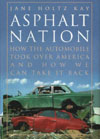

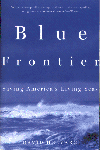




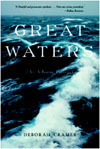



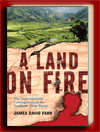
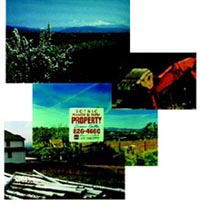




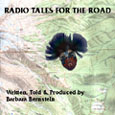

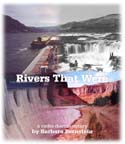







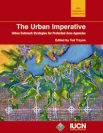
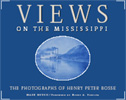
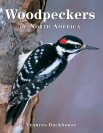
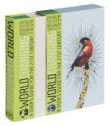






 Advertisement
Advertisement 



